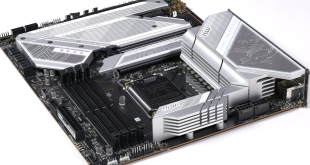Automatic CPU Overclocking:
Selecting from the drop-down list of Gigabyte's performance boost settings gives an instant system overclock.
We opted for the ‘Turbo' mode which resulted in a CPU overclock to 4.50GHz and a memory speed of 1866MHz. The CPU VCore selected by Gigabyte was a very high 1.4V – a level that we wouldn't feel confident using on a daily basis. A voltage this high will result in high-90's CPU temperatures with a high-end cooler such as Corsair's H100i.
We didn't like the fact that our 2133MHz memory was forced to operate at substandard speeds, either.
We backed down to the ‘High' setting which gave a 4.4GHz CPU speed, but this also used a CPU VCore of 1.4V, which is way more than our chip requires. The voltage level had an adverse affect on temperatures, so much so that we would call this automatic overclock setting unusable and impractical for 24/7 usage.
If it's automated overclocking you're after, be prepared invest heavily in CPU cooling, as even the lowest frequency boost to 4.3GHz utilises a 1.4V CPU VCore.
Manual CPU Overclocking:
To aid our overclocking efforts we tweaked some settings in an attempt to obtain as much speed from the processor as we could. These adjustments consisted of; 1.350V CPU VCore, 1.200V CPU Ring Voltage, 39x Uncore multiplier, 1.900V VRIN Voltage, and LLC set to Extreme (to maintain a constant 1.350V CPU VCore).
We managed to hit 4.6GHz with the above settings, but as we have seen from the other Z87 motherboards that have been tested with this particular chip, stability was not present.
Backing down to the tried-and-tested frequency of 4.5GHz gave us perfect stability, just as it did with Z87 motherboard from ASRock and MSI.
Given the Z87-D3HP motherboard's entry-level price point and design, it was impressive to see that the board's power delivery components were capable of delivering the same stable overclock as much higher-priced options.
Our 4.5GHz frequency validation can be viewed here.
2933MHz Memory Testing:
While a system’s response to memory frequency may be heavily swayed by the CPU’s individual memory controller, the motherboard’s performance can also help to obtain higher speeds, especially when XMP settings are taken into account.
We switched to our 2933MHz set of G.Skill Trident X F3-2933C12D-8GTXDG memory to test the Gigabyte Z87-D3HP motherboard’s ability to function with high speed memory modules. These sticks feature an XMP profile for 2933MHz, although we’ve only tested one board to date that will boot with the XMP settings – ASRock's Z87 Extreme9/ac.
The Gigabyte Z87-D3HP was unable to post with the G.Skill Trident X F3-2933C12D-8GTXDG memory kit installed. We couldn't even get to the BIOS to manually configure the settings. This is where a function similar to Asus' MemOK button would come in very handy by allowing the system to post with stable memory settings.
We don't see this as a major disappointment because the likelihood of a user pairing an entry-level Z87 motherboard with extreme memory geared for hardened overclockers is very unlikely. Support for memory around the 2133MHz mark will suffice for the Gigabyte Z87-D3HP motherboard as it is one of the current memory ‘sweet spots' for price vs performance.
Edit: We have received confirmation from Gigabyte that the above memory functions correctly when using the Z87-D3HP motherboard's newest – F5g – BIOS. The BIOS update can be downloaded here.
 KitGuru KitGuru.net – Tech News | Hardware News | Hardware Reviews | IOS | Mobile | Gaming | Graphics Cards
KitGuru KitGuru.net – Tech News | Hardware News | Hardware Reviews | IOS | Mobile | Gaming | Graphics Cards









